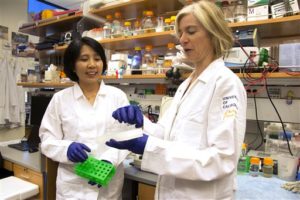By: Maddie O’Shea
What if humans had the power to change the human genome? For the United Kingdom, the answer is lying in their grasp.
After years of debate and controversy, the UK has reached a landmark decision. The UK Human Fertilization and Embryology Authority has approved modification of human embryos.
The motive behind the modification of embryos is to learn more about how fertilized eggs develop. If successful, scientists will gain knowledge on both embryo development after in vitro fertilization, and treatment for infertility. The project will receive their embryos from an excess from in vitro treatment that would have otherwise been discarded.

While this could lead to fascinating outcomes, some fear that this trend will lead to “designer babies” in which a baby’s genetic makeup is tweaked to ensure that particular genes are present. However, the study will be for research purposes only, as it is still illegal for genetically altered embryos to be implanted in women.
In a statement on the U.S. National Institute of Health site, Director Francis Collins wrote, “The concept of altering the human germline in embryos for clinical purposes has been debated over many years from many different perspectives and has been viewed almost universally as a line that should not be crossed.”
At least one student at Hershey High School agrees. Sophomore Cameron Brown said, “It’s okay, but there must be a strict set of guidelines and regulations that prohibit the use of tech for ‘designer babies.’ It should be restricted to deformities, gene disorders, and baby health.”
The UK is not the first to experiment with human DNA. In 1987, Japanese scientists discovered CRISPR, short for Clustered Regularly Interspaced Short Palindromic Repeats, while trying to study a protein in E.Coli. The repeating DNA, along with Cas proteins, is an important role in bacterial immune systems. When bacteria encounter an invading source of DNA, such as a virus, it copies and incorporates segments of the foreign DNA as “spacers” between the DNA repeats in CRISPR.

In the following years, scientists continued to observe these repeats in many other bacteria. In Fall 2012, scientists from the University of California, Berkeley, created a gene editing tool by hijacking the CRISPR-Cas9 to cut and replace gene sequences. Their procedure influenced many others to start modifying human DNA.
Within the next few months, the project waits on a research ethics committee to approve the program.
The question now is how much farther scientists will delve into altering genes.








